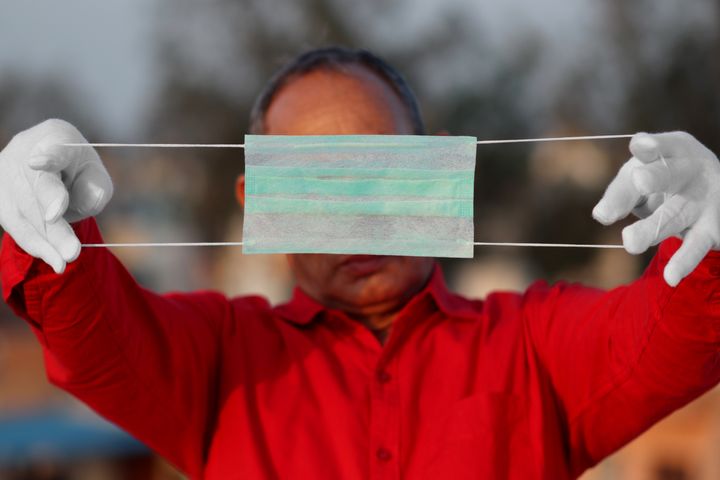We’re here to guide you through the coronavirus lockdown. Sign up to the Life newsletter for daily tips, advice, how-tos and escapism.
If there are gaps either side of your face mask when you’re wearing one, it’s probably not doing an awful lot to keep your germs under wraps.
That’s according to a preprint study from University of Edinburgh which tested the effectiveness of seven types of mask – including medical-grade masks, homemade masks and face shields – to see how well they stopped the wearer’s germs from escaping.
Wearing a face mask or other covering over the mouth and nose was found to reduce the forward distance of your breath – which can carry the virus – by more than 90%.
All seven mask types could potentially help limit the spread of Covid-19, researchers said.
However strong jets of air can escape from the back and sides of some masks if they are ill-fitting – so wearers (and those around them) need to be cautious.
Engineers at the University of Edinburgh assessed different face coverings using an imaging technique, which enabled them to measure the distance and direction of air that is expelled when a person breathes or coughs.
Measurements were taken from people wearing different face coverings while standing or lying down, and from a mannequin connected to a cough-simulating machine. Here’s what researchers found.
Surgical and handmade masks
Surgical masks and the handmade masks tested in the study were found to limit the forward flow of a breath out, but also generate “far-reaching leakage jets” out of the sides of ill-fitting masks, which could travel several metres.
Heavy breathing and coughing, in particular, were shown to generate intense backward jets, which isn’t great news for the person stood behind the mask wearer – proving why social distancing is also very important.
Only masks that form a tight seal with the face were found to prevent the escape of virus-laden fluid particles, the team said.

Respirator masks
A type of mask commonly worn by workers exposed to fine dust – called a respirator mask – was shown to provide protection to the wearer. But it does not provide protection to others.
This is because the respirator has a valve system that filters the inhaled air but does not filter the exhaled air.
The valves on these masks that made breathing easier could potentially allow infectious air to spread considerable forward distances, the study suggested.
Face shields
Researchers also found that full-face shields – the kind worn as personal protective equipment (PPE) by NHS workers – worn without face masks underneath them enabled the release of a strong downward jet of air.
Getting the right fit for your mask or face cover
The University of Edinburgh research echoes other studies which found that in order for masks to work properly, they need to fit snugly to the face – one study in the journal ACS Nano suggested that a 1% gap between mask and face reduced the filtering efficiency of all the masks they tested by half or more.
Lead researcher Dr Ignazio Maria Viola, of the University of Edinburgh’s School of Engineering, said: “I have generally been impressed by the effectiveness of all the face coverings we tested. However, we discovered that some face coverings allow the emergence of downward or backward jets that people are not aware of and that could be a major hazard to others around them.”
Dr Felicity Mehendale, a surgeon at the Centre for Global Health at the University of Edinburgh’s Usher Institute, said it was “reassuring” to see the handmade mask worked just as well as the surgical mask to stop the wearer’s breath flowing directly forwards.
“This suggests that some handmade masks can help to prevent the wearer from infecting the public,” she said. “But, the strong backward jets mean you need to think twice before turning your head if you cough while wearing a mask; and be careful if you stand behind or beside someone wearing a mask.”
The upshot: you really don’t want lots of gaps around your face mask or face covering. If possible, masks should fit snugly on the chin (almost forming a seal to the skin) and sit just under your eyes to get a proper seal over the bridge of your nose – while making sure it’s still comfortable for you to breathe. And remember, if in doubt, keep 2m away from others as much as possible.